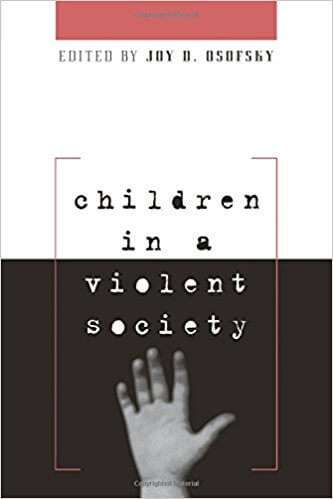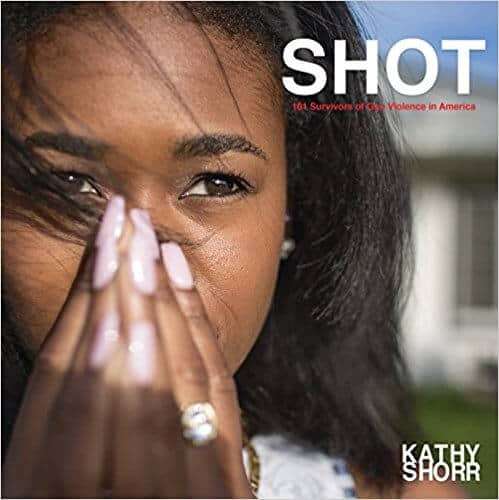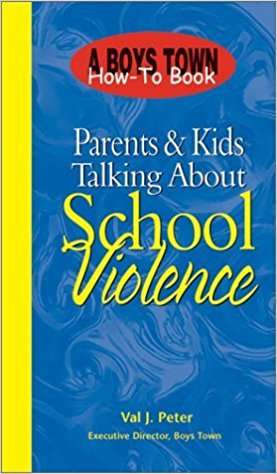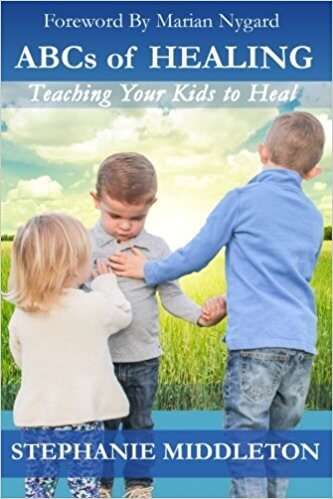The staff at BookTrib is deeply saddened by the tragedy in Florida. We extend our thoughts to the families and survivors.
“I caught a glimpse of this type of natural selection at work one December afternoon at Wilbur Cross High in New Haven. I was sitting in a second floor classroom talking to a social studies teacher. School was just letting out. A series of sharp pops erupted outside and we looked out the window and saw two cars parked at odd angles in the street. The boys inside the cars— at least three of them turned out to be Wilbur Cross students— were firing pistols at each other. Students were running diving behind hedges and snowbanks. One of the cars started backing up very fast, then roared off, up a side street. The other car squealed away in another direction. The scene had a heavy panic-edged quality as people began to pick themselves up and look around to see who, if anyone, had been hit. Nobody seemed to be hurt. But then the car that left by the side street— a large, muddy, dark blue Buick– came barreling back out…in front of the school. People began to run again as the Buick lurched around, bumped over the curb and then sped off in the direction the other car had taken. That was the end of the excitement….
~ William Finnegan, Cold New World: Growing Up In A Harder Country
I read this in a book a few years ago and it happened just as the author described. I know because I was there. I saw it all unfold while looking out a window in a classroom, just one floor above. It didn’t happen last year or even in this millenium. That was nearly 30 years ago. I was 15— the same age as the kids in Florida. School was letting out— just like in Florida. And, if it wasn’t for wasting time before cheerleading practice began, I’d have been outside in front of the school waiting for the bus home. The author who was there, William Finnegan, is a Pulitzer Prize winner he wrote about this experience back then and no one listened.
A decade later— while in grad school—I read another book that put my life in “gun wavin'” New Haven into perspective:
“The high rates of exposure to violence for children growing up in some inner-city neighborhoods has been well documented. In a survey of sixth,eighth and tenth graders in New Haven in 1992, 40 percent reported witnessing at least one violent crime in the past year. Very few inner-city children in New Haven were able to avoid exposure to violence, and almost all eighth graders knew someone who had been killed.”
~ Joy D. Ofosky (ed.), Children In A Violent Society
In 1992, I was in twelfth grade, but my sisters were tenth and eighth graders. Later, when I thought I could work in politics, I shared this data with colleagues in a southern metropolis interested in becoming a Model City. I thought it was important since New Haven had been an original Model City since before I was born. It was dismissed as a northern, inner-city problem; a “relic of [my] high school days that had no bearing on the future of the metro area.” In a room full of that state’s most influential people, I warned that this could be any town, anywhere in America. No one listened. Instead, they decided to debate whether we should order from Bojangles or Lizard’s Thicket for lunch and who had the better fried chicken. That was more than a decade ago. On June 17, 2015, that northern problem became their southern problem overnight.
A friend of my mother, a teacher, let her students— boys I knew growing up, including my 11th grade crush— tell their stories in a book. These Homeboys rang the alarm. One— Albert— was gunned down before he could tell his. He was in a play just months prior where he played a boy who was killed by gun violence. It was a sick twist of fate and a tragic display of life imitating art that not one of us could fathom at the time. We were just having fun. His story was included in the book, but it ended up being a eulogy— a letter from a friend and classmate. Albert was just 18. The New York Times did a story about the book back in 1993 after it was published. But again, no one listened.
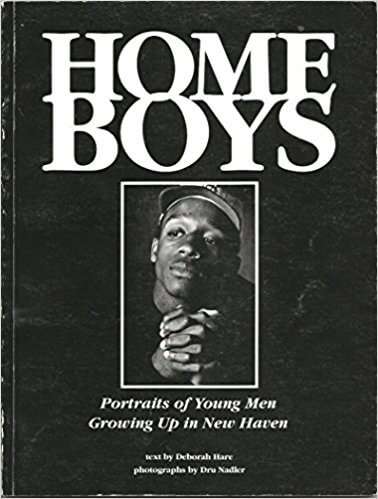 I am a mom from Connecticut. The massacre at Newtown happened here just over five years ago. Almost three years ago, a state Senator from South Carolina, who I sat on committees with was killed in Charleston on that June day in 2015 along with eight others in his church while at bible study; he was a pastor. Thirty years ago, it happened— my friends died— and now it is happening again. This is not right, this is not the world I wanted to hand down to my kid. We have to do better. It doesn’t matter if it is a mass shooting or an individual shooting— it hurts. It all hurts.
I am a mom from Connecticut. The massacre at Newtown happened here just over five years ago. Almost three years ago, a state Senator from South Carolina, who I sat on committees with was killed in Charleston on that June day in 2015 along with eight others in his church while at bible study; he was a pastor. Thirty years ago, it happened— my friends died— and now it is happening again. This is not right, this is not the world I wanted to hand down to my kid. We have to do better. It doesn’t matter if it is a mass shooting or an individual shooting— it hurts. It all hurts.
I have learned that writing on this issue is never enough. I wrote a news article in 2008 as a member of former Connecticut Governor Jodi Rell’s task force to examine gun violence as a public health issue. We never got to do what we intended. We failed. We failed our kids, we failed our citizens and we failed ourselves.
This morning, I gave my teen daughter an extra long hug and a kiss; then I sent her off to school and into a violent world. I said, “Goodbye,” and I cried.
I cried because the reality that she may not come home today— that it was even a possibility— hit me. Losing your baby is a pain no parent should have to bear. I don’t talk with her much about the violence that unfurled in my youth, but today, I will. I will do it not because I want to, but because I now have to. I have to tell her this world is flawed, it is scary, but more importantly, I have to tell her that I understand.
I am nearly 30 years removed from what I saw that December day and for the first time, I can say: I was scared, I was traumatized and I won’t ever forget it. It wasn’t the first shooting at my old school while I was there, and I am sad to say that even after I left, it was not the last.
Information is like an ounce of prevention (we hope). Here are some books to help readers understand what is a long-standing problem, stories from survivors, and guides on how to talk to children about this event and past tragedies. Hopefully now, these books can help steer us to solve a problem that before we failed to address. Hopefully now, someone will read this and finally listen.


